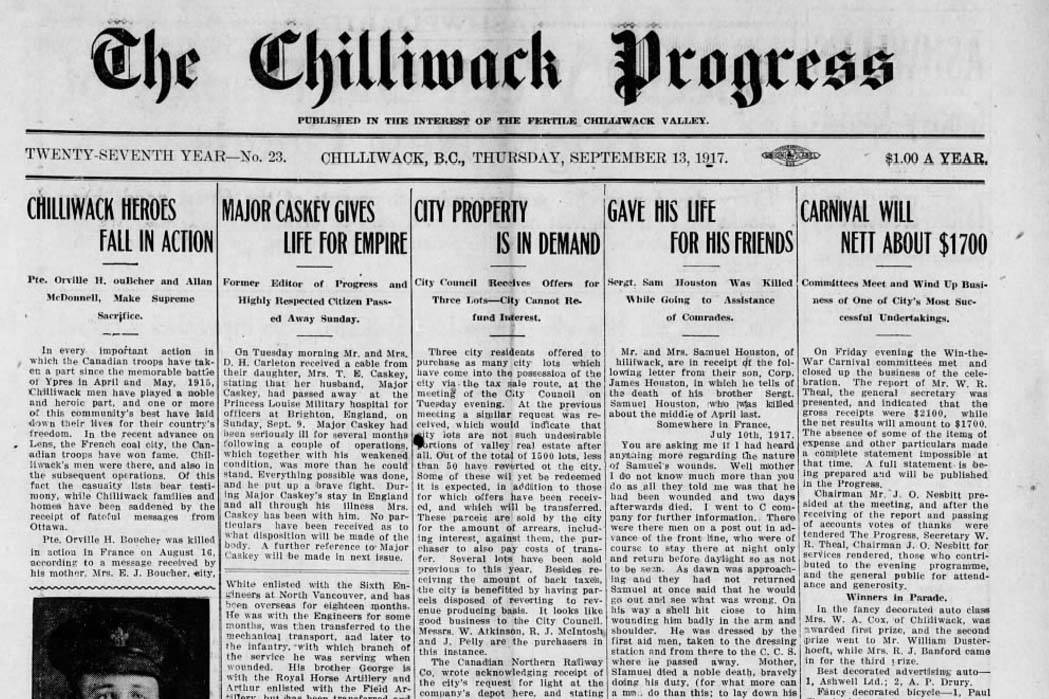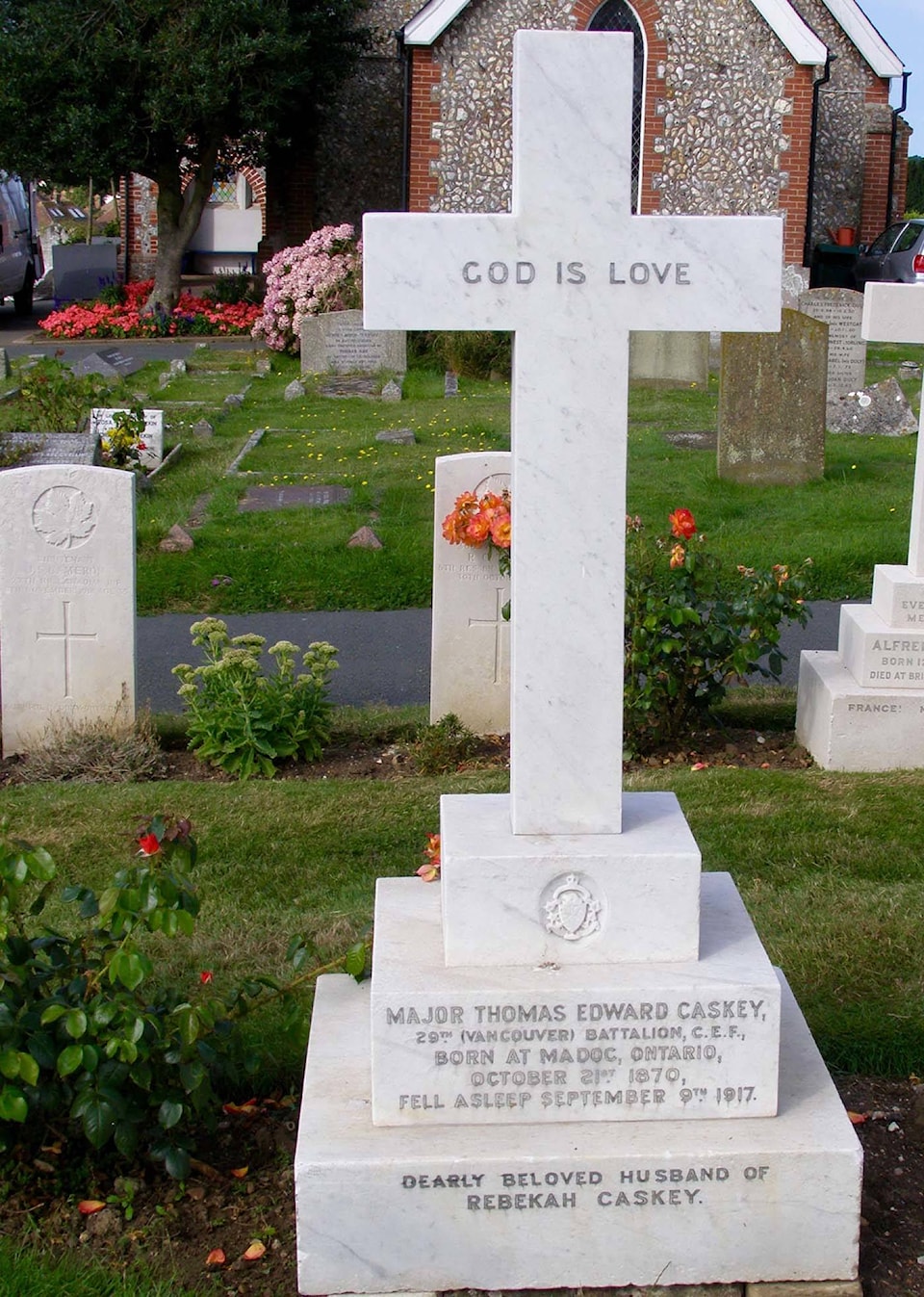This past weekend marked the 100th anniversary of the death of a former Progress editor, Canadian soldier, and former alderman.
Thomas Caskey passed away on Sept. 9, 1917 and is buried in Sussex, UK. The following story came from Kevin Gordon, a trustee at the Seaford Museum. Seaford Cemetary has more than 300 war graves, including Caskey’s.
Gordon shared this story via email with The Progress to memoralize Caskey 100 years later.
Thomas Edward Caskey was born on Oct. 21, 1874, in Ontario, the son of James and Deborah Caskey. The family had Irish roots.
He married Rebecca Carleton at Kincardine, Ont. on Valentine’s Day 1901. He spent some time working as a farmer in Ontario but in 1906 the couple settled in Kipp Avenue in Chilliwack. Caskey saw service in the 32nd Regiment. (This was a local militia known as the ‘Bruce Regiment’). He was also a journalist and in early 1914 became the editor of the local newspaper, the Chilliwack Progress. Whilst the editor, he co-ordinated a fund to raise $1,000 to buy a machine gun for the Canadian Army. Caskey was also active in local politics and became an alderman on the first Chilliwack City Council when it was established in 1908.
Soon after the start of the war, on Nov. 11, 1914, Caskey joined the army (the 82nd battalion) at Vancouver. He was 40 years old and his army record shows that he was fit but grey-haired. He qualified as a 1st Class Instructor and trained soldiers in musketry and using the Lewis machine gun. He travelled to England but was disappointed that he was not sent to France but posted to Shorncliffe Barracks at Folkestone as a machine gun trainer. He soon rose to the rank of Major and his wife Rebecca came over to England to be with him.
On March 9, 1916, he was posted to France but the tour was short-lived as he contracted appendicitis. It is clear that Major Caskey had several medical problems. After he had his appendix removed he was attached to the 30th Battalion and in late 1916 was attached to the 29th (Vancouver) Battalion in Seaford. He had continued medical problems. After a major mastoid operation on June 2, 1916 he left Seaford to attend several hospitals including the Westcliffe Eye Hospital and the Ear Hospital in Folkestone. He also was in a hospital in London before being transferred to the Red Cross Hospital for Officers (now the the Princess Louise Children’s Hospital) in Dyke Road, Brighton.
He died in of acute nephritis (inflammation of the kidneys) at Brighton on Sept. 9, 1917 (note: The Progress archives show the front page that week listed Caskey and numerous other Chilliwack men as lost in the war). Caskey was buried at Seaford Cemetery and his grave was marked with a white marble cross. He is remembered on the Chilliwack War Memorial. A house (now a listed building) in Chilliwack is named after him.
To learn more about Thomas Caskey and other war veterans from Chilliwack, visit our archives online at theprogress.newspapers.com.

